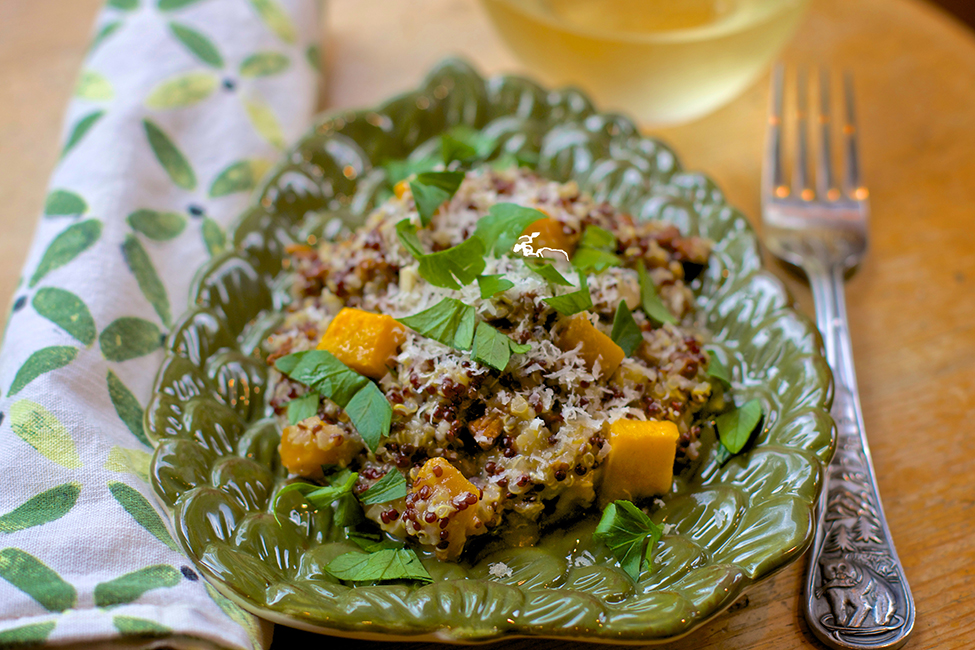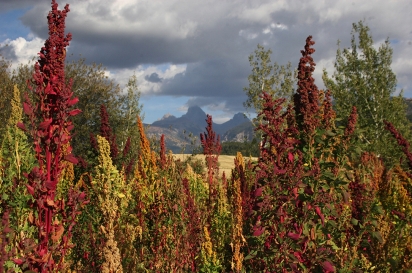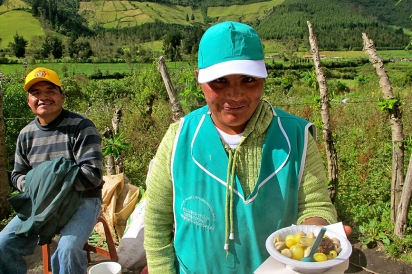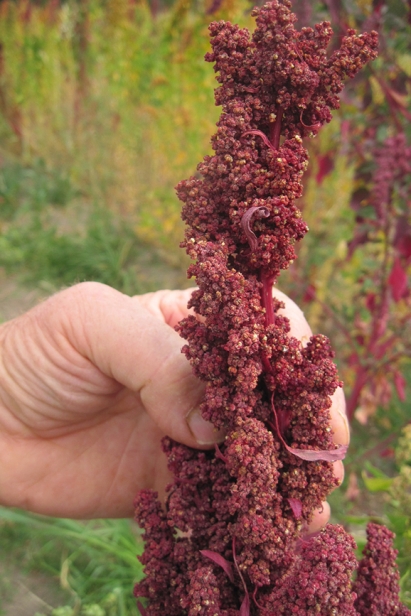For the Love of Quinoa: Andean Grain Finds A Home in the Tetons
My first memorable taste of quinoa was years before it became America’s latest food trend. An Ecuadorian farmer handed me a bowl of bean and quinoa soup as I passed through her village on the way to climb the 15,695-foot volcano Guagua Pichincha.
While the just-harvested fava beans floating in the golden broth drew me in, it was the quinoa—delightfully chewy and crunchy at the same time—that left a lasting impression.
Like most Americans, I was quinoa-naïve back then. Quinoa was new to our food scene, and most didn’t know how to pronounce (KEEN-wah) or prepare this seed that cooks up like a grain.
Sure, I’d eaten quinoa before and had even served it to my family with mixed success. But I had never really considered where quinoa came from, who grew it or how far it had traveled to the bulk bins of my local grocery store.
The majority of the world’s quinoa is grown in Peru, Bolivia and Ecuador, where the crop has spiritual, cultural and practical significance to the Andean people. Resistant to drought and cold, quinoa is able to thrive at high altitudes where other crops could not.
It’s prized for its nutrient density and agricultural versatility, and the United Nations General Assembly declared 2013 the International Year of Quinoa. The UN promised to use quinoa to address malnutrition and the impending shortage of food across the globe.
In a few short years, quinoa’s status escalated from peasant staple to miracle grain. It’s a superfood, since it’s the only grain known to possess a full complement of all the essential amino acids. Quinoa is now a staple of the first-world diet, especially beloved by the vegan, vegetarian, health-conscious and the gluten-free.
As our insatiable hunger for quinoa grew, escalating prices boosted Andean farmers’ incomes, pulling them out of poverty. Quinoa became so valuable that the people who grew it could no longer afford to eat it. Instead, Andean families reached for cheaper processed foods, as well as the soda pop and candy they could now afford.
Besides causing westernization of the indigenous people’s diet, quinoa’s popularity has been blamed for the degradation of the diverse farmland they’d tended for thousands of years. Scrambling to keep up with the demand for quinoa overseas, the pressure was on to squeeze out older methods of sustainable farming. Farmers sold off the llamas that traditionally grazed on 90% of the fields to create room for a quinoa monoculture. The absence of llama guano, apparently the perfect fertilizer for this delicate ecosystem, resulted in a soil crisis.
Meanwhile, in Idaho, I spotted fields of the distinctive lavender, red, pink and yellow stalks growing on land near my farm in Felt. Like other high-altitude farmers in Colorado and the Pacific Northwest, five of my neighbors traded a combined total of 50 acres meant for potatoes and alfalfa to give quinoa a try. Now two years later, only one farm is sticking it out with a second crop of quinoa coming up.
Pete Koson, a businessman who dabbled in quinoa farming in Victor in 2012, said the Teton Valley has the perfect altitude and great potential for growing quinoa.
“But it takes an innovative approach to grow it well.”
Koson’s enthusiasm for quinoa farming became an effort to restore economic vitality to a valley hit hard by the recession. Although there were a lot of challenges to overcome—choosing the right seeds, weeding, separating the seed from the germ—he had visions of the Teton foothills covered in the colorful stalks.
Quinoa’s wide diversity of genotypes—there are more than 3,000 identified—is part of the problem. Different strains prefer specific environments, and matching the perfect seed to the perfect place requires trial and error for farmers new to growing quinoa.
Figuring out how to harvest the seed posed another problem.
“It’s just too labor intensive,” said Dennie Arnold, a seed potato farmer in Felt, Idaho. His experiment with growing quinoa lasted only one season. Unless one invests in special equipment, the dried flowers must be separated from the stalks by hand to extract the tiny edible seed.
Robin Pierson and Geno Forsyth were more successful with their one-acre plot—it produced 100 pounds of quinoa but took the labor of five people to harvest the seeds by hand. Since the crop matures at an uneven pace, Pierson used scissors to lop off the seed heads as they became ready. She stripped the dried flowers from their stalk and rubbed the seeds off with her hands. Then she placed the seeds in a pillowcase and ran them through a washing machine to remove their bitter saponine coat.
Last summer, Pierson traveled to Tibet where a 100-acre quinoa crop planted 25 years ago with Bolivian seeds still thrives. After exchanging seeds with Tibetan farmers, she now has a small portion of her Alta field planted with those original Bolivian seeds.
It remains to be seen if small farmers in Teton Valley will be cashing in on quinoa’s popularity. Pierson admits that growing quinoa is a labor of love. She could have sold her last quinoa crop many times over but instead opted to donate proceeds to nonprofit organizations in Tibet. This year’s crop is not looking as robust as her last.
“It’s sparser and we’ve had trouble with irrigation,” she said. “It’s a good thing I don’t have to live on it. It would be a lean year."








